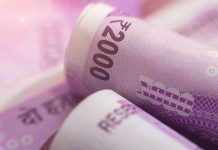Brexit optimism and dollar weakness sent the pound US dollar exchange rate to yet another post Brexit high on Tuesday. The exchange rate peaked at US$1.4027 before easing back below the important psychological level of US$1.40 towards the end of the day.
| What do these figures mean? |
|---|
|
When measuring the value of a pair of currencies, one set equals 1 unit and the other shows the current equivalent. As the market moves, the amount will vary from minute to minute. For example, it could be written: 1 GBP = 1.28934 USD Here, £1 is equivalent to approximately $1.29. This specifically measures the pound’s worth against the dollar. If the US dollar amount increases in this pairing, it’s positive for the pound. Or, if you were looking at it the other way around: 1 USD = 0.77786 GBP In this example, $1 is equivalent to approximately £0.78. This measures the US dollar’s worth versus the British pound. If the sterling number gets larger, it’s good news for the dollar. |
The pound has advanced rapidly over the past few weeks, jumping 3% since the start of the year. Investors have been gaining in confidence that the U.K. with have a softer exit from the European Union than previously thought. Several EU officials and even France’s President Macron have suggested that Britain will secure a good, bespoke deal. A softer Brexit would be more beneficial to the UK economy and therefore more beneficial to the pound.
| Why is a “soft” Brexit better for sterling than a “hard” Brexit? |
|---|
| A soft Brexit implies anything less than UK’s complete withdrawal from the EU. For example, it could mean the UK retains some form of membership to the European Union single market in exchange for some free movement of people, i.e. immigration. This is considered more positive than a “hard” Brexit, which is a full severance from the EU. The reason “soft” is considered more pound-friendly is because the economic impact would be lower. If there is less negative impact on the economy, foreign investors will continue to invest in the UK. As investment requires local currency, this increased demand for the pound then boosts its value. |
Data from the Confederation of British Industry (CBI) also boosted the pound in the previous session. January’s CBI industrial survey indicated that optimism within the manufacturing sector was continuing to grow. Manufacturing output, domestic orders and exports all increased again in January. However, the report also raised concerns over ongoing skills shortages.
| Why does strong economic data boost a country’s currency? |
|---|
| Solid economic indicators point to a strong economy. Strong economies have strong currencies because institutions look to invest in countries where growth prospects are high. These institutions require local currency to invest in the country, thus increasing demand and pushing up the money’s worth. So, when a country or region has good economic news, the value of the currency tends to rise. |
Today the focus remains firmly with economic data as investors watch for the release of UK labour market data. Market participants will pay close attention to average wage growth. Analysts are expecting average wages to have increased at 2.5% in the three months to November. Considering that inflation was 3.1% in November, the pressure on household budgets is clear, as wages fall in real terms. Given the high levels of inflation that the U.K. is experiencing, investors will want to see average wage growth increasing in order for the pound to remain supported at these levels.
Dollar continues downward trajectory
The dollar experienced a brief relief rally following news that the US government shutdown was over. The Republicans and Democrats finally voted the stopgap funding bill through the Senate on Monday evening, meaning that the government could continue spending. However, the rally was short lived and with little else to focus on, the dollar continued its downward trajectory on Tuesday.
The World Economic Forum also started in Davos, as expected, the speakers so far have made no impact on the currency markets. Market participants will be watching for President Trump’s speech to see whether he is using the Davos platform to relay his America First protectionist ideals, which could be dollar negative.
|
This article was initially published on TransferWise.com from the same author. The content at Currency Live is the sole opinion of the authors and in no way reflects the views of TransferWise Inc. |





